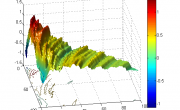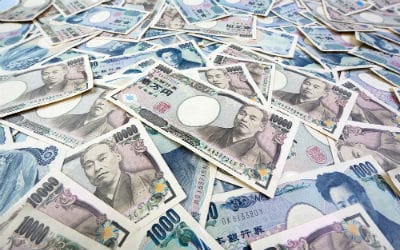The price of gold rose on Monday, climbing above $1,100.00 per troy ounce after oil price volatility spurred market jitters.
Precious metals advanced across the board on Monday, with gold futures rebounding from back-to-back declines last week. Gold for February delivery climbed $11.60 or 1.1% to $1,107.90 per troy ounce on the Comex division of the New York Mercantile Exchange. The yellow metal has benefited from increased haven demand this month, having spent the better part of January at or near the $1,100.00 price level.
Silver futures also climbed 22 cents or 1.6% to $14.28 an ounce. Platinum spot spiked $27.63 or 3.3% to $860.13 an ounce.
Gains in precious metals were spurred by a sharp reversal in oil prices on Monday, which triggered a retreat for European stocks.
US West Texas Intermediate (WTI) crude for March delivery fell 92 cents or 2.9% to $31.27 a barrel. International benchmark Brent crude fell 97 cents or 3% to $31.21 a barrel.
Oil prices bounced from extreme oversold levels last week, climbing more than 20% on Thursday and Friday combined.
European equity markets were trading lower on Monday. The Europe Stoxx 600 Index fell 0.9%. Eurozone blue-chip Stoxx 50 Pr also fell 0.8%.
American stock futures were also trading lower ahead of the opening bell, signaling that renewed volatility may be in store for Wall Street investors.
Declines in Europe and North America offset a positive start to the week for Asian shares, which continued to recover from the early-month rout that wiped trillions from the global markets.
Japan’s Nikkei 225 Index gained 0.9%, following a nearly 6% gain on Friday. China’s Shanghai Composite Index added 0.8%.
Firmer gold prices weighed on the bullish US dollar, which normally tracks inversely with the yellow metal. The dollar index, a weighted average of the US currency against a basket of six rivals, fell 0.2% to 99.33. Despite the general decline, the greenback notched up gains against its commodity-driven peers the Canadian dollar and Australian dollar. The Aussie is not part of the basket of currencies tracked by the dollar index.
Volatility could return to the financial markets this week when the Federal Reserve meets for its first policy meeting of the year. While not expected to raise rates this week, the Fed will likely stick to its forecast of steady growth and gradual rate increases. According to analysts, the Fed’s official statement will probably be less dovish than investors hope, which could trigger another slide in the major equity indices.
Tradersdna is a leading digital and social media platform for traders and investors. Tradersdna offers premiere resources for trading and investing education, digital resources for personal finance, market analysis and free trading guides. More about TradersDNA Features: What Does It Take to Become an Aggressive Trader? | Everything You Need to Know About White Label Trading Software | Advantages of Automated Forex Trading











































